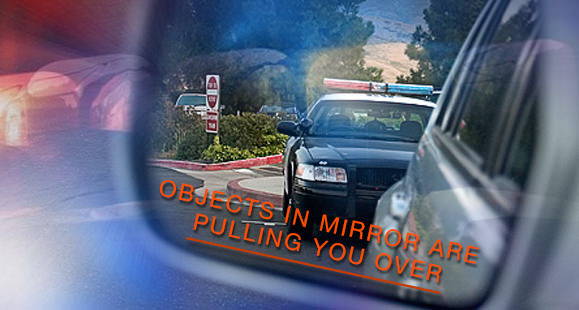Here it goes again, the flashing red and blue lights in your rear view mirror. You get that sinking feeling in your stomach as you slow down, put on your turn signal, and start pulling over to the side of the road. Then there are those tense, anxious moments waiting for the police officer to walk up to your window and ask for ID and proof of insurance.
Here’s some good news, though: this traffic stop is different than the others from your past. Why? Because you now have the ability to use your Smartphone to show proof of auto insurance to the officer!
Okay — on second thought, the fabulousness of this development may have been overstated a wee bit. After all, this new technological advancement still won’t have any impact on why you were stopped in the first place.
Your Smartphone As Your Insurance Card
 It is interesting to note that California is now one of about two dozen U.S. states that permits drivers to display electronic proof of insurance using their Smartphones or similar digital devices. Governor Jerry Brown signed this measure into law in the latter half of 2012. Of course, you can still present your “hard copy” proof of insurance as you have always done; this legislation only expands your options as a California driver.
It is interesting to note that California is now one of about two dozen U.S. states that permits drivers to display electronic proof of insurance using their Smartphones or similar digital devices. Governor Jerry Brown signed this measure into law in the latter half of 2012. Of course, you can still present your “hard copy” proof of insurance as you have always done; this legislation only expands your options as a California driver.
Interestingly enough, the law does not specifically spell out what must be shown in order to constitute electronic proof of insurance. All the statute says is “evidence of financial responsibility may be provided using a mobile electronic device.” It is believed that the preferred approach is to produce either a “digital auto insurance card” that may be downloaded from the mobile site of an insurance company, or a PDF file that was sent by an insurer to a policyholder. However, the law itself does not preclude a digital picture of an actual paper proof of insurance card that was taken with a Smartphone and stored in the device’s “Photos” files.
Positive and Negatives of Electronic Proof of Insuranc
Now that you know about this new option for displaying electronic proof of insurance, should you take advantage of it? As with everything, there are advantages and drawbacks to storing proof of insurance on your Smartphone. Obviously, the biggest upside is the convenience, especially if you already have plenty of other digital applications on your device (mapping software, credit cards, home automation controls, etc.). This way you will not have to remember to take your new proof of insurance card you get in the mail and put it into your vehicle. Plus, you will be spared the awkwardness of digging through a glove compartment the next time you are pulled over.
Be Sure You Understand the Limitations
Of course, this approach is not without its disadvantages as well. The biggest one is if your Smartphone happens to be “dead” and you are unable to power it up to produce the required electronic proof of insurance. Also, some people may feel weird about handing their Smartphone over to a police officer. Finally, there is something a bit ironic about using your Smartphone for proof of insurance if you were in fact pulled over for talking or texting while driving.
 It should be noted that you can’t provide electronic proof of insurance if you do not currently have an auto insurance policy at all. To solve that problem, contact AIS Insurance today. They will help you find a suitable, affordable policy so you do not get caught without coverage or proof of insurance. You might even be able to download proof of coverage onto your Smartphone!
It should be noted that you can’t provide electronic proof of insurance if you do not currently have an auto insurance policy at all. To solve that problem, contact AIS Insurance today. They will help you find a suitable, affordable policy so you do not get caught without coverage or proof of insurance. You might even be able to download proof of coverage onto your Smartphone!
This content is offered for educational purposes only and does not represent contractual agreements. The definitions, terms and coverage’s in a given policy may be different than those suggested here and such policy will be governed by the language contained therein. No warranty or appropriateness for a specific purpose is expressed or implied.

